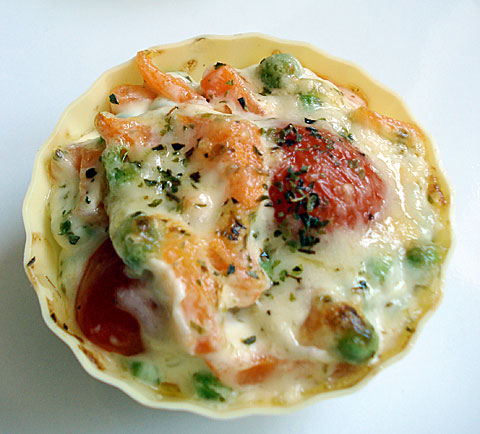
This vegetable gratin in a cup is a great way to use up leftover vegetables in a tasty way. It only takes a few minutes to assemble too. The only thing you should have are the cherry tomatoes, which make their own sauce in a way. Otherwise you can use any cooked or frozen vegetables you have on hand. Here I've used some leftover zucchini and frozen carrot and peas. You could use the ever popular sweet pepper and onion confit too.
The 'sauce' used is mayonnaise. Cooking with mayonnaise may seem a bit odd, but it works very well. It's a very popular all-around sauce in Japanese home cooking. Cooked mayonnaise sauce tastes very nice when cold, making it very suited to bento dishes. I have used a 'light' mayonnaise here to halve the calories (50 calories per tablespoon, instead of about 100 for regular mayo), and added a little pesto from a jar to make it even tastier. I seem to always have jars of sauces spreads and pestos and so on around in the fridge - if you do too, try experimenting with them!
You do need a toaster oven to cook them up fast, but for serious bento makers this is a really handy piece of kitchen equipment to have (see essential bento making supplies).
This is a lacto-ovo-vegetarian recipe. To turn this into a vegan one use a non-egg mayonnaise substitute and omit the cheese. You can up the nutrients by adding chopped up leftover meat, more cheese, and so on.